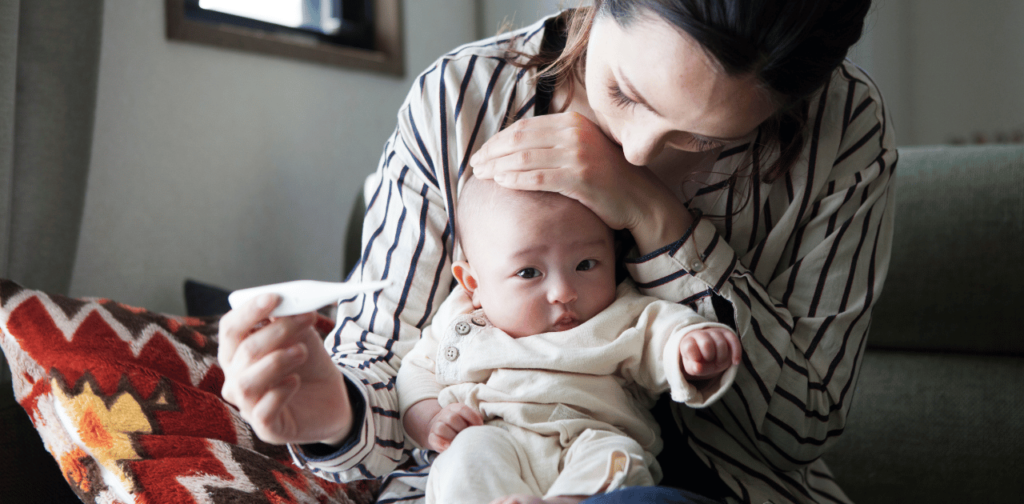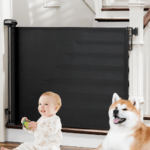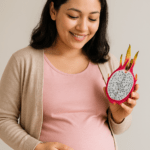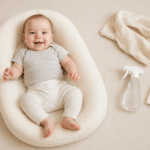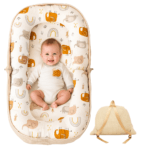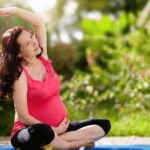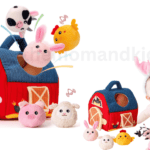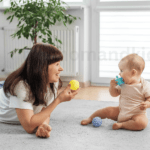When your little one is feeling under the weather with a fever, it’s essential to ensure they are comfortable and safe, especially at night. Dressing a baby with a fever at night can be tricky and challenging for parents because you want to keep them warm without overheating. It’s crucial to balance keeping your baby comfortable without causing them to overheat. Proper attire can help regulate your baby’s body temperature and promote better sleep.
In this guide, we’ll provide you with step-by-step instructions and tips on how to dress your baby with a fever at night to promote their comfort and well-being.
About Fever in Babies

Fever in babies is a common concern for parents and caregivers. In the United Kingdom, as in many parts of the world, fever is often a sign that a baby’s body is fighting off an infection or illness. It’s important to understand that fever is not an illness but a symptom of an underlying issue.
A baby’s average body temperature can vary slightly, but a rectal temperature of 100.4°F (38°C) or higher is generally considered a fever in infants. Fever is the body’s natural response to infection, as it helps to create an environment where viruses and bacteria find it more challenging to survive and reproduce.
Common causes of baby fever include viral infections like the common cold or flu, bacterial infections, teething, and immunizations. Parents need to monitor their baby’s fever and other symptoms like irritability, poor feeding, or difficulty breathing and seek medical advice if they have concerns.
While fever is not usually a cause for alarm, ensuring your baby stays hydrated and comfortable is crucial. Dressing them appropriately for the temperature and providing fluids, such as breast milk or formula, can help manage fever-related discomfort. Always consult a healthcare professional if you have questions or if your baby’s fever persists or worsens.
Related post: How To Put A Baby To Sleep In 40 Seconds: A Soothing Slumber
Should I let my child sleep with a fever?
Letting your child sleep with a fever is generally safe, as sleep is essential for their recovery. However, there are some important considerations:
- Comfort: As discussed earlier, ensure your child is dressed appropriately to maintain a comfortable body temperature.
- Monitoring: Periodically check on your child at night to ensure they are not too hot or cold. Feel their forehead to gauge their temperature.
- Hydration: Make sure your child is well-hydrated. To prevent dehydration, offer fluids like water, clear broths, or rehydration solutions.
- Medication: If a healthcare professional advises, administer fever-reducing medicines according to the recommended dosage.
- Seek Medical Advice: If your child’s fever is very high, persistent, or accompanied by severe symptoms, consult a healthcare provider for guidance.
How often should I check my child’s fever at night?
When your child has a fever, monitoring their temperature during the night is essential to ensure their comfort and well-being. A good rule of thumb is checking their rage every 4-6 hours or as a healthcare professional advises. However, if your child’s fever is exceptionally high or is experiencing discomfort, you should check it more frequently every 2-3 hours
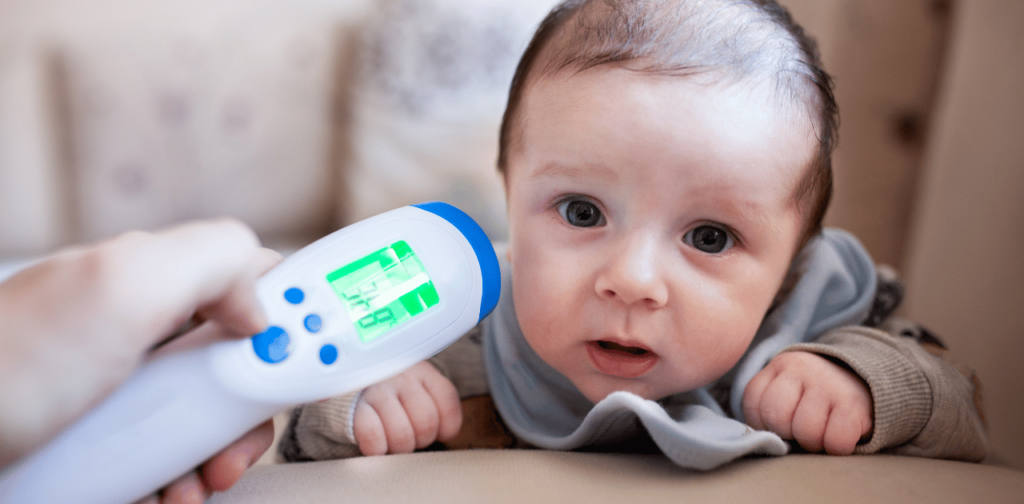
The goal is to balance monitoring their condition and allowing them to rest. Always follow your healthcare provider’s fever management and monitoring recommendations, especially if your child has an underlying medical condition.
How can I comfort my baby’s fever at night?
Comforting your baby with a fever at night is crucial for their well-being. Ensure the Room is comfortable (around 68-72°F or 20-22°C). Dress them in lightweight, breathable clothing like cotton pyjamas to prevent overheating. Offer soothing activities like gentle rocking or cuddling. Keep their crib or bed cosy with familiar blankets or a sleep sack. Maintain hydration by offering fluids such as breast milk or formula. Administer fever-reducing medication as advised by a healthcare professional. Keep the Room dimly lit to avoid disturbing their sleep. Monitor your baby for signs of discomfort, and be there to provide comfort and reassurance throughout the night.
Monitor Temperature:
- Regularly check your baby’s temperature using a digital thermometer to stay informed about their fever.
Dress Comfortably:
- Dress your baby in lightweight, breathable clothing to prevent overheating. Avoid heavy blankets.
Maintain a Comfortable Room Temperature:
- Keep the room cool and well-ventilated, ideally between 68-72°F (20-22°C).
Offer Plenty of Fluids:
- Keep your baby hydrated with fluids such as water, breast milk, or formula to prevent dehydration.
Use Fever-Reducing Medication:
- Consult your pediatrician about using appropriate over-the-counter medications like acetaminophen or ibuprofen for infants.
Provide a Lukewarm Bath:
- A lukewarm bath can help lower body temperature and soothe your baby. Avoid cold baths, as they can cause shivering.
Comforting Environment:
- Create a calm environment by dimming lights and reducing noise to help your baby relax.
Hold and Cuddle:
- Holding your baby close can provide comfort and reassurance during this uncomfortable time.
Use a Humidifier:
- A humidifier can help ease breathing if your baby has a stuffy nose or cough.
Consult Your Pediatrician:
- If your baby’s fever persists or worsens, contact your pediatrician for further guidance and care.
Importance of wearing clothes a baby’s fever
Proper clothing is of utmost importance when managing a baby’s fever. Here’s why it matters:
- Temperature Regulation: Proper clothing helps regulate your baby’s body temperature. When they have a fever, their body may become warmer than usual. Dressing them in appropriate clothing ensures they stay comfortable without overheating.
- Comfort and Sleep: Comfort is crucial for a sick baby. The proper clothing can help them feel snug and secure, promoting better sleep and overall well-being. Rest is essential for recovery.
- Safety: Using the proper clothing, such as sleep sacks or onesies, reduces the risk of suffocation associated with loose blankets. It ensures a safe sleep environment for your baby.
- Avoiding Chills: Fever can cause chills, making your baby feel cold. Adequate clothing prevents these chills and keeps your baby warm and cosy.
- Preventing Overheating: On the flip side, dressing your baby in too many layers can lead to overheating, which can be harmful. Choosing lightweight fabrics and monitoring room temperature helps strike the right balance.
What should my baby wear to bed with a fever?
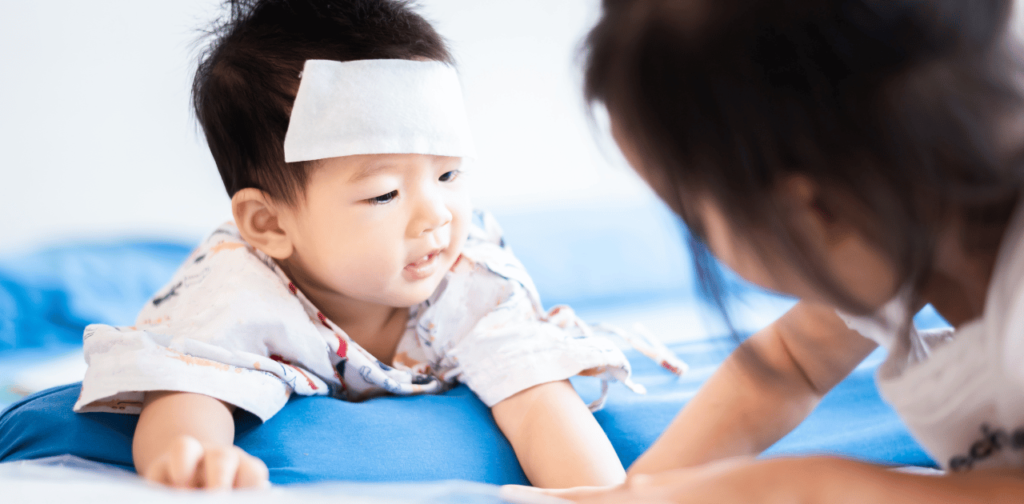
When dressing your baby for bed with a fever, it’s essential to balance keeping them comfortable and preventing overheating. Here’s a guideline on what your baby should wear:
Lightweight Pajamas:
Start with lightweight, breathable pyjamas made of natural fabrics like cotton. Avoid heavy, thick materials.
Footed Pajamas:
Footed pyjamas are a great choice as they keep your baby’s feet warm without the need for socks. Make sure they are not too tight, allowing Room for movement.
Sleep Sack or Swaddle:
Consider using a sleep sack or swaddle blanket instead of traditional blankets. These provide warmth and security without the risk of suffocation.
Layering:
If the Room is excellent, you can add a layer under the pyjamas, like a long-sleeved onesie. Layering allows you to adjust your baby’s clothing based on room temperature.
Room Temperature:
Keep the Room comfortably cool, ideally between 68-72°F (20-22°C). Use a room thermometer to monitor conditions.
Monitor Comfort:
Periodically check your baby at night to ensure they are not too hot or cold. Feel their forehead to gauge their temperature.
Avoid Hats:
While hats are generally essential for newborns, they can lead to overheating when a baby has a fever. It’s best to skip the hat unless advised by a healthcare provider.
Remove Excess Clothing if Needed in baby fever at night
Remove excess clothing if needed” is a crucial step when dressing a baby with a fever at night. This step ensures that your baby remains at a comfortable temperature throughout the night. If your baby feels too warm or starts to sweat excessively, gently remove a layer of clothing or the sleep sack. Overdressing can lead to overheating, which can be uncomfortable and potentially dangerous for a feverish baby. By monitoring your baby’s comfort and adjusting their clothing accordingly, you can help them sleep better and support their recovery.
Remember, the goal is to balance warmth and comfort without causing your baby to become too hot.
Should a baby wear a sleep sack with a fever?
Determining whether a baby should wear a sleep sack with a fever depends on various factors. Sleep sacks are generally considered safe for infants as they eliminate the risks associated with loose blankets. However, the decision should be based on the baby’s comfort and room temperature. In mild fever cases, a sleep sack may be suitable, as it provides a cozy and secure environment. But if the fever is high and the room is warm, it’s advisable to opt for lighter clothing to prevent overheating. Always monitor your baby’s comfort and adjust their attire as needed to ensure they sleep comfortably during a fever.
How can I reduce my baby’s fever?
To reduce your baby’s fever, follow these steps:
- Consult a Healthcare Provider: If your baby is under three months old or has a high fever (above 100.4°F or 38°C), consult a doctor before attempting to reduce the fever.
- Administer Medication: If a healthcare provider recommends an appropriate dose of infant fever-reducing medication, such as infant paracetamol or ibuprofen. Always follow the dosage instructions carefully.
- Maintain Hydration: Ensure your baby stays hydrated by offering frequent breast milk or formula feeds. Hydration is essential during fever.
- Dress Comfortably: Dress your baby in lightweight, breathable clothing to prevent overheating.
- Use a Fan or Cool Cloth: You can use a fan on a low setting or a damp, lukewarm cloth to gently cool your baby’s skin. Avoid using cold water or ice.
- Keep the Room Comfortable: Maintain a room temperature between 68-72°F (20-22°C) to help your baby feel comfortable.
- Rest and Comfort: Encourage your baby to rest and provide comfort through cuddles and soothing activities.
- Monitor: Continuously monitor your baby’s fever and overall condition. If the fever persists or worsens, consult your healthcare provider.
Conclusion
Dressing a baby with a fever at night requires careful consideration of their comfort and safety. By choosing the proper clothing, dressing in layers, monitoring the room temperature, ensuring hydration, and checking for signs of discomfort, you can help your baby sleep more comfortably during their illness.
FAQs (Frequently Asked Questions)
1. Can I use a regular blanket on my baby with a fever?
- Using a sleep sack instead of a blanket is safer to prevent the risk of suffocation.
2. Should I give my baby fever-reducing medication before bedtime?
- Consult with your paediatrician before administering any medication to your baby.
3. How often should I check on my baby during the night?
- Check on your baby periodically, but avoid disturbing their sleep excessively.
4. What if my baby’s feet are cold despite dressing them warmly?
- Ensure that the room temperature is comfortable, and consider adding socks or footed pyjamas.
5. Can I use a fan in the baby’s Room during the night?
- A fan can help maintain a comfortable room temperature, but ensure it’s not directly blowing on your baby.
